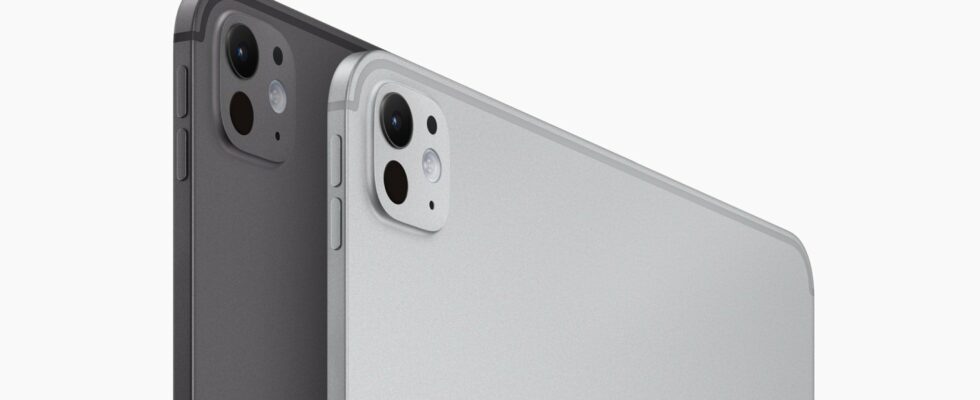The switch from the new M4 iPad Pros to Oled display technology could have allowed support for an “Always-on” mode similar to that of the latest iPhone Pros… but this is not the case. At least for now.
Equipped for the first time with Oled screens, the new iPad Pro M4s, unveiled by Apple during a conference held on May 7, abandon their old LCD (and Mini-LED) panels for organic panels close to those installed on the latest generations of Apple Watch and iPhone Pro. In a press release, the brand even speaks of a “revolutionary” screen.
Unlike other products, Apple however did not see fit to add to its new iPad Pros an “Always-on” mode allowing the persistent display of certain information (time, notifications, weather, shortcuts, etc.) on the lock screen, even when the device is asleep. A function that we have found on Apple Watches since the launch of the Series 5 in 2019, and on high-end iPhones since the arrival of the 14 Pro models in 2022.
A feature that Apple would introduce later? Not so sure…
This absence can be explained on a technical level. The Oled screens of the new iPad Pros do have a variable display frequency, but not quite the same type as on the iPhone 14 Pro and 15 Pro. According to the technical information communicated by Apple, the iPad Pro M4s are in fact satisfied with an Oled panel varying between 10 and 120 Hz… while the Oled LTPO screens of the latest iPhone Pros this time oscillate between 1 and 120 Hz.
It is precisely by lowering the refresh rate of their screen to only 1 Hz that these iPhones can offer an “Always-on” mode without affecting their autonomy too much. The information displayed on their standby screen is then updated only once per second. In the case of an equivalent function on the latest iPad Pros, they would be updated 10 times every second… for significantly increased energy consumption.
Clearly, the iPad Pro M4s are in exactly the same situation as the iPhone 13 Pro in 2021. They also had an Oled screen with variable refresh between 10 and 120 Hz. A specificity which did not allow them to take advantage of any “Always-on” mode. Apple has also made the 1 Hz frequency a prerequisite for activating this feature.
It is therefore a safe bet that the new iPad Pros will simply never be eligible… unless the firm revises its criteria in this area. It’s unlikely, but it’s not completely impossible either.
What about iPadOS 18?
We know, for example, that the firm plans to launch docks dedicated to its iPad Pro M4. These accessories would lend themselves very well to the addition of an “Always-on” mode, which could possibly be deployed with iPadOS 18 at the start of the school year. This path still seems quite bumpy to us immediately, and we prefer not to take it too seriously in the absence of more concrete elements to sink our teeth into.
We will undoubtedly know more with WWDC 2024.
Want to join a community of enthusiasts? Our Discord welcomes you, it is a place of mutual help and passion around tech.
